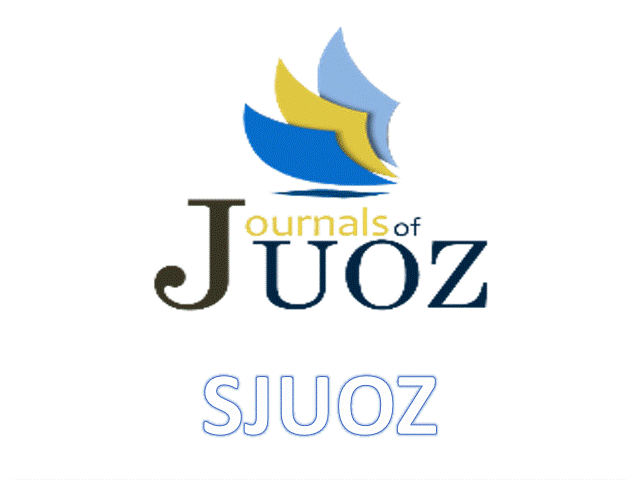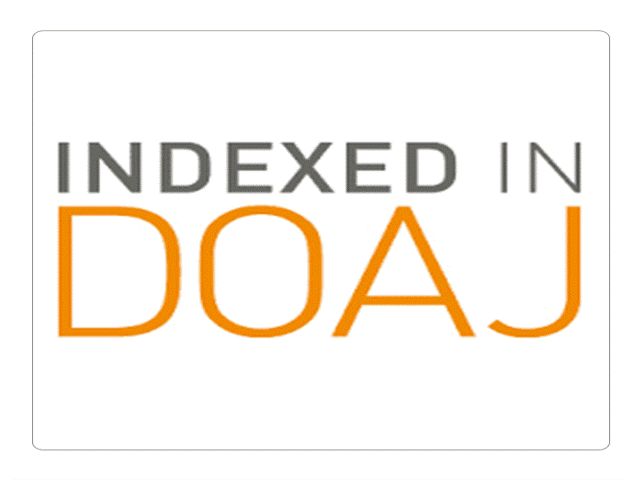A Comparative Study of Physiological and Physical Parameters Between Married Females Residing at The Qushtapa Refugee Camp and in The City of Erbil in Kurdistan-Iraq
DOI:
https://doi.org/10.25271/sjuoz.2021.9.2.804Keywords:
Refugee, Anemia Status, Biochemical Parameters, UTI, IraqAbstract
Refugees are under a high-risk factor of being suffering from many different diseases due to the uncontrolled accommodations environment of the camps. This study aimed to test whether the camp's habitat affecting the physical activities of the married females as a biomarker of the adverse effects on the health management issues. 60 married females (30 refugees and 30 city residents) were recruited. Blood samples of all participants were analyzed for blood glucose, blood triglycerides, blood cholesterol, blood hemoglobin (HGb), blood heamatocrite percentage (HCT %) and other physical parameters estimated like body mass index (BMI), mean arterial pressure (MAP). Additionally, participants were screened for bacterial UTIs. Refugees married females showed a significant decrease in the blood hemoglobin concentration (gm/dl) compared with the city females (P= 0.014) and blood heamatocrite percentage (HCT %) (P= 0.0074). Also, no significant differences were observed for the other parameters between refugees married females and city married females. The UTI bacterial infection in refugees married females (21, 65.6%) was significantly higher than the infection among city resident married females (11, 34.4%) (P=0.0096). The higher incidence percentage of UTIs were caused by Gram-negative bacteria (87.5%). The most dominant pathogen which established UTIs was Escherichia coli (57%). A high-stress level of camp environment and nutritional malformation may affect the refugees married females more than the city females. Therefore, it is the international community responsibility to protect and provide life-saving assistance to all refugee women and to those that have been subjected to such situations.
Downloads
References
Assafi, M.S., Ibrahim, N.M.R., Hussein, N.R., Taha, A.A. & Balatay, A.A. (2015). Urinary bacterial profile and antibiotic susceptibility pattern among patients with urinary tract infection in Duhok City, Kurdistan Region, Iraq. Int. J. Pure Appl. Sci. Technol., 30, 54-63.
Ayelign, B., Abebe, B., Shibeshi, A., Meshesha, S., Shibabaw, T., Addis, Z., & Dagnew, M. (2018). Bacterial isolates and their antimicrobial susceptibility patterns among pediatric patients with urinary tract infections. Turkish Journal of urology, 44, 62.
Baron, E.J., Peterson, L.R. & Finegold, S.M. (1994). Bailey and Scott’s diagnostic microbiology: Mosby St. Louis.
Bien, J.; Sokolova, O. & Bozko, P. (2012). Role of uropathogenic Escherichia coli virulence factors in development of urinary tract infection and kidney damage. Int J Nephrol, 1-15.
Cheesbrough, M. (2006). District laboratory practice in tropical countries, part 2: Cambridge university press.
Dey, S., Saha, T. & Narendrakumar, U. (2017). Analysis of urine as indicators of specific body conditions. Pages 022051. IOP Conf. Ser.: Mater. Sci. Eng.
Elmanama, A.A., Alreqeb, A.A., Kalloub, H.K., Al-Reefi, M.R., Musallam, R.J., Radi, S.A. & Harara, Z.M. (2018). Bacterial etiology of urinary tract infection and their antimicrobial resistance profiles. Journal of Al Azhar University-Gaza (Natural Sciences), 20, 81-98.
Farajnia, S., Alikhani, M.Y., Ghotaslou, R., Naghili, B. & Nakhlband, A. (2009). Causative agents and antimicrobial susceptibilities of urinary tract infections in the northwest of Iran. International Journal of Infectious Diseases, 13, 140-144.
Fazel, M., Doll, H. & Stein, A. (2009). A school-based mental health intervention for refugee children: an exploratory study. Clin Child Psychol Psychiatry, 14, 297-309.
Habib, R.R., Basma, S.H. & Yeretzian, J.S. (2006). Harboring illnesses: on the association between disease and living conditions in a Palestinian refugee camp in Lebanon. Int J Environ Health Res, 16, 99-111.
Hurrell, R.F., Lynch, S., Bothwell, T., Cori, H., Glahn, R., Hertrampf, E., & Zimmermann, M.B. (2004). Enhancing the absorption of fortification iron. A SUSTAIN task force report. Int J Vitam Nutr Res, 74, 387-401.
Hussein, N.R., Daniel, S., Salim, K. & Assafi, M.S. (2018). Urinary tract infections and antibiotic sensitivity patterns among women referred to Azadi teaching hospital, Duhok, Iraq. Avicenna journal of clinical microbiology and infection, 5, 27-30.
Jahandeh, N., Ranjbar, R., Behzadi, P. & Behzadi, E. (2015). Uropathogenic Escherichia coli virulence genes: invaluable approaches for designing DNA microarray probes. Cent European J Urol, 68, 452-458.
Keusch, G.T. (2003). The history of nutrition: Malnutrition, infection and immunity. The Journal of Nutrition, 133, 336S-340S.
Khatri, B., Basnyat, S., Karki, A., Poudel, A. & Shrestha, B. (2012). Etiology and antimicrobial susceptibility pattern of bacterial pathogens from urinary tract infection. Nepal Med Coll J, 14, 129-132.
Lustig, S.L., Kia-Keating, M., Knight, W.G., Geltman, P., Ellis, H., Kinzie, J.D., & Saxe, G.N. (2004). Review of child and adolescent refugee mental health. J Am Acad Child Adolesc Psychiatry, 43, 24-36.
Maka, G., Shah, S., Bano, S. & Tunio, S.A. (2020). Antibiotic susceptibility profiling of Gram-negative bacteria causing upper respiratory tract infections in Hyderabad, Sindh. Journal of Life and Bio Sciences Research, 1, 12-15.
Memela, S. & Maharaj, B. (2016). Challenges facing refugee women. A critical review. Pages 53-72. Global change and human mobility, Springer.
Naqid, I.A., Balatay, A.A., Hussein, N.R., Ahmed, H.A., Saeed, K.A. & Abdi, S.A. (2020). Bacterial strains and antimicrobial susceptibility patterns in male urinary tract infections in Duhok province, Iraq. Middle East Journal of Rehabilitation and Health Studies, 7.
Ogbeide, O., Wagbatsoma, V. & Orhue, A. (1994). Anaemia in pregnancy. East African medical journal, 71, 671-673.
Pavlish, C. (2005). Refugee women's health: collaborative inquiry with refugee women in Rwanda. Health Care Women Int, 26, 880-896.
Pollack, C., Sadegh-Nobari, T., Dekker, M., Egerter, S. & Braveman, P. (2008). Where we live matters for our health: the links between housing and health.
Polse, R.F., Qarani, S.M., Assafi, M.S., Sabaly, N. & Ali, F. (2020). Incidence and Antibiotic Sensitivity of Klebsiella pneumonia isolated from urinary tract infection patients in Zakho emergency hospital/Iraq. Journal of Education and Science, 29, 257-268.
Rafalskiy, V., Pushkar, D., Yakovlev, S., Epstein, O., Putilovskiy, M., Tarasov, S., & Gorelysheva, N. (2020). Distribution and antibiotic resistance profile of key Gram-negative bacteria that cause community-onset urinary tract infections in the Russian Federation: RESOURCE multicentre surveillance 2017 study. Journal of global antimicrobial resistance, 21, 188-194.
Rutta, E., Gongo, R., Mwansasu, A., Mutasingwa, D., Rwegasira, V., Kishumbu, S., & Ramadhani, H. (2008). Prevention of mother-to-child transmission of HIV in a refugee camp setting in Tanzania. Glob Public Health, 3, 62-76.
Saeed, F., Nadeem, M., Ahmed, R.S., Tahir Nadeem, M., Arshad, M.S. & Ullah, A. (2016). Studying the impact of nutritional immunology underlying the modulation of immune responses by nutritional compounds – a review. Food and Agricultural Immunology, 27, 205-229.
Samari, G. (2017). Syrian refugee women's health in Lebanon, Turkey, and Jordan and recommendations for improved practice. World Med Health Policy, 9, 255-274.
Shields-Cutler, R.R., Crowley, J.R., Hung, C.S., Stapleton, A.E., Aldrich, C.C., Marschall, J. & Henderson, J.P. (2015). Human urinary composition controls antibacterial activity of siderocalin. J Biol Chem, 290, 15949-15960.
Tetens, I., Bendtsen, K.M., Henriksen, M., Ersboll, A.K. & Milman, N. (2007). The impact of a meat- versus a vegetable-based diet on iron status in women of childbearing age with small iron stores. Eur J Nutr, 46, 439-445.
Turner, A., Pathirana, S., Daley, A. & Gill, P.S. (2009). Sri Lankan tsunami refugees: a cross sectional study of the relationships between housing conditions and self-reported health. BMC Int Health Hum Rights, 9, 16.
UNHCR (2014). Inter-agency regional response for Syrian refugees: Health and nutrition bulletin: Iraq, Jordan, and Lebanon - Issue No. 14, January – March 2014.
Weise Prinzo, Z. & de Benoist, B. (2002). Meeting the challenges of micronutrient deficiencies in emergency-affected populations. Proc Nutr Soc, 61, 251-257.
WHO (2004). Guidelines on food fortification with micronutrients for the control of micronutrient malnutrition. Geneva, Switzerland: World Health Organization.
Downloads
Published
How to Cite
Issue
Section
License
Copyright (c) 2021 Sozan M. Qarani, Firas Kh. Qasim, Mahde S. Abdulrahman

This work is licensed under a Creative Commons Attribution 4.0 International License.
Authors who publish with this journal agree to the following terms:
- Authors retain copyright and grant the journal right of first publication with the work simultaneously licensed under a Creative Commons Attribution License [CC BY-NC-SA 4.0] that allows others to share the work with an acknowledgment of the work's authorship and initial publication in this journal.
- Authors are able to enter into separate, additional contractual arrangements for the non-exclusive distribution of the journal's published version of the work, with an acknowledgment of its initial publication in this journal.
- Authors are permitted and encouraged to post their work online.








